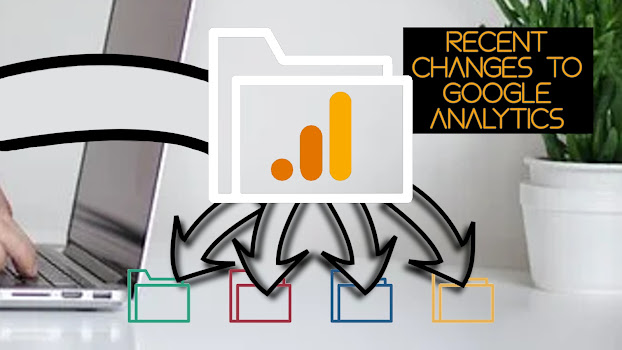Recent Changes To Google Analytics
Recent
Changes To Google Analytics
Google has recently made some updates to Analytics regarding
default channel groupings and user-roles. These changes give marketers more
control and specificity in how they use Analytics.
Default
Channel Groupings
Channel groupings are a way to organize your traffic sources into groups based on rules. Analytics provides default groupings based on the most popular ways to organize traffic and has recently added quite a few new default groupings.
The previous default channel groupings were:
·
Organic Search
·
Paid Search
·
Direct
·
Social
·
Email
·
Affiliate
·
Referral
·
Display
·
Other Advertising
·
Other
New additions to default channel groupings are:
·
Organic Shopping
·
Paid Shopping
·
Organic Video
·
Paid Video
·
Paid Other
·
Audio
·
SMS
·
Mobile Push Notifications
These groupings are defined by what is set as the “Campaign
Medium” parameter, and each default channel grouping has a specific case
sensitive tag that organizes traffic into that channel grouping. These are
already set as the default, but if you want to organize your traffic
differently this can be done by using custom parameters, called UTM tags, in
the links that you share.
Additionally, YouTube traffic is now characterized as either
“Organic Video” or “Paid Video”, not “Video”, “Organic Social”, or “Paid
Social” as it was previously. Using the UTM Campaign Medium tag of “organic” on
a social site has been updated to be classified “Organic Social” and no longer
“Paid Search”, a much more relevant classification. Using the medium regex^(.
*cp.*|ppc|paid.*)$ will label traffic as being Paid, and will classify the
traffic as either Paid Search, Paid Social, Paid Shopping, Paid Video or Paid
Other.
These changes to the default channel groupings make it
easier for marketers to get in depth and specific about how they organize their
traffic data, without having to expend a lot of effort modifying their channel
groupings. Overall, this seems to be a good move on Google’s part, simplifying
the process while simultaneously adding value to the default settings by
getting more specific.
User
Roles
Previously called “User Management”, Google has made some
updates to “Access Management”. User Management and Editor have been merged
under an Administrator role, replacing the previous “Manage Users” Permission.
Resource access levels have been renamed from Edit, Collaborate, and Read &
Analyze to Editor, Analyst, and Viewer, with the addition of a “None” option.
Here is what each level means:
Administrator – This role has full control of analytics,
including editor, and can manage users.
Editor – Property level control, does not include the
ability to manage users.
Analyst – Has the ability to create, edit and delete
specific property assets and can collaborate on shared assets.
Viewer – Has the ability to view data and change what data
is visible and can see shared assets, but cannot collaborate.
None – No access, but the user may have a need for another
role for other resources.
The addition of two metric restrictions have also been made.
These are “No Cost Metrics” and “No Revenue Metrics”. These restrictions mean
that if applied to a user, that user cannot see any metrics relating to the
restriction. Check
here for a more in-depth look on how this works in Analytics.
These changes allow account and property administrators to
have more control over how much access other users have to data. This is useful
for a number of reasons, including privacy.
Last
Thoughts
The recent changes to Google Analytics offer marketers a
better experience by giving them greater control and making it easier to get a
more in depth look into their data. Greater and more relevant specificity in
how traffic is classified will give marketers a greater sense of how their
campaigns are going, which channels are performing the best and which need the
be helped or cut. Greater control in user roles makes it easier for companies
and agencies to customize how access is granted to best fit each unique
situation.
To keep up with Google’s constant updates takes a lot of
effort. Instead of using your valuable time trying to keep up, a better option
is to work with a Google Premier Partner like Direct Placement.
Direct Placement, LLC is a digital marketing agency
that offers a variety of digital ads and services. Our trained and certified team of Account Managers and Internet
Marketing Advertisers is dedicated to helping your business achieve its
advertising goals. They will work diligently with you to help ensure our
advertising efforts are tailored to your specific needs. Contact Direct Placement, LLC today or visit our website to
discover how we can start transforming your business one click at a time! You
can also follow us on Facebook, Twitter, or Blogger for more online marketing related content.
Direct
Placement makes digital marketing easy. Your Marketing Pro is
a Google Premier Partner and ready to boost your ad to
the top of search results. Get started now.






Comments
Post a Comment